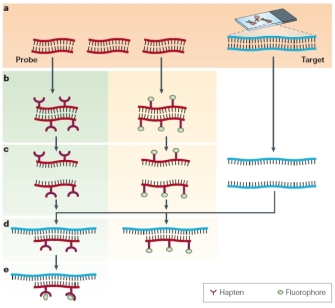Experimental Procedures for Fluorescence in situ hybridization
Fluorescence in situ hybridization, as an important biological experimental technique, it features in situ and without PCR, and can be used for quantitative analysis of specific microorganisms in environmental samples. The following is an example of activated sludge FISH experimental steps and methods. Slide coating (1) Wash the slide in HCl solution (1% HCl in 70% Ethanol) (2) Allow to dry for a further 5 minutes in poly-L-lysine (0.01%) solution (3) Put into 60℃ oven for 60 minutes or dry at room temperature overnight Sample fixation (1) Add 3 volumes of 4% paraformaldehyde to the sample (activated sludge) and place in a 4 ° C freezer for more than 3 hours or overnight (2) Centrifuge, discard paraformaldehyde and add same volume of PBS (3) Centrifuge, discard PBS, and add the same volume of ethanol + PBS (w / w 1: 1) (4) Set the fixed samples into a -20 ℃ refrigerator to preserve Dehydration (1) Place the suitable amount of fixed sample on the slide, (2) put into 46°C oven drying for 10 minutes (3) Followed by immersion 50%, 80%, 96% ethanol solution, each for 3 minutes (4) dry in the air Hybridization (1) Add 10 μl of Hybridization buffer to the sample on the glass plate and try to cover the entire sample (2) Add 1 μl probe to Hybridization buffer (3) Put a wet absorbent paper in a 50ml centrifuge tube, put the glass pieces in, then place them in a 46°C incubator for 1.5 hours (4) Preheat the Washing buffer to 48°C for the next step Rinse (1) After the hybridization lasts for 1.5 hours, quickly putting the glass into 48°C Washing buffer (2) Place in a 48°C incubator for 30 min (3) Rinse the glass with ultrapure water, then air dry Microscopic examination After drying, the sample is covered with an appropriate amount of antifading reagent, covered with a coverslip, and then observed under a confocal laser scanning microscopy. The mentioned above is the experimental procedures for Fluorescence in situ hybridization. Fluorescence in situ hybridization


Your email address will not be published. Required fields are marked *